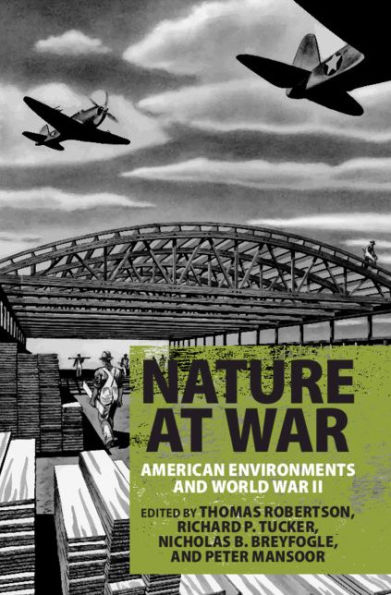This anthology is the first sustained examination of American involvement in World War II through an environmental lens. World War II was a total and global war that involved the extraction, processing, and use of vast quantities of natural resources. The wartime military-industrial complex, the 'Arsenal of Democracy,' experienced tremendous economic growth and technological development, employing resources at a higher intensity than ever before. The war years witnessed transformations in American agriculture; the proliferation of militarized landscapes; the popularization of chemical and pharmaceutical products; a rapid increase in energy consumption and the development of nuclear energy; a remaking of the nation's transportation networks; a shift in population toward the Sunbelt and the West Coast; a vast expansion in the federal government, in conjunction with industrial firms; and the emergence of environmentalism. World War II represented a quantitative and qualitative leap in resource use, with lasting implications for American government, science, society, health, and ecology.
"1135037149"
Nature at War: American Environments and World War II
This anthology is the first sustained examination of American involvement in World War II through an environmental lens. World War II was a total and global war that involved the extraction, processing, and use of vast quantities of natural resources. The wartime military-industrial complex, the 'Arsenal of Democracy,' experienced tremendous economic growth and technological development, employing resources at a higher intensity than ever before. The war years witnessed transformations in American agriculture; the proliferation of militarized landscapes; the popularization of chemical and pharmaceutical products; a rapid increase in energy consumption and the development of nuclear energy; a remaking of the nation's transportation networks; a shift in population toward the Sunbelt and the West Coast; a vast expansion in the federal government, in conjunction with industrial firms; and the emergence of environmentalism. World War II represented a quantitative and qualitative leap in resource use, with lasting implications for American government, science, society, health, and ecology.
29.49
In Stock
5
1

Nature at War: American Environments and World War II

Nature at War: American Environments and World War II
eBook
$29.49
$38.99
Save 24%
Current price is $29.49, Original price is $38.99. You Save 24%.
Related collections and offers
29.49
In Stock

Product Details
| ISBN-13: | 9781108889261 |
|---|---|
| Publisher: | Cambridge University Press |
| Publication date: | 04/02/2020 |
| Sold by: | Barnes & Noble |
| Format: | eBook |
| File size: | 17 MB |
| Note: | This product may take a few minutes to download. |
About the Author
From the B&N Reads Blog
